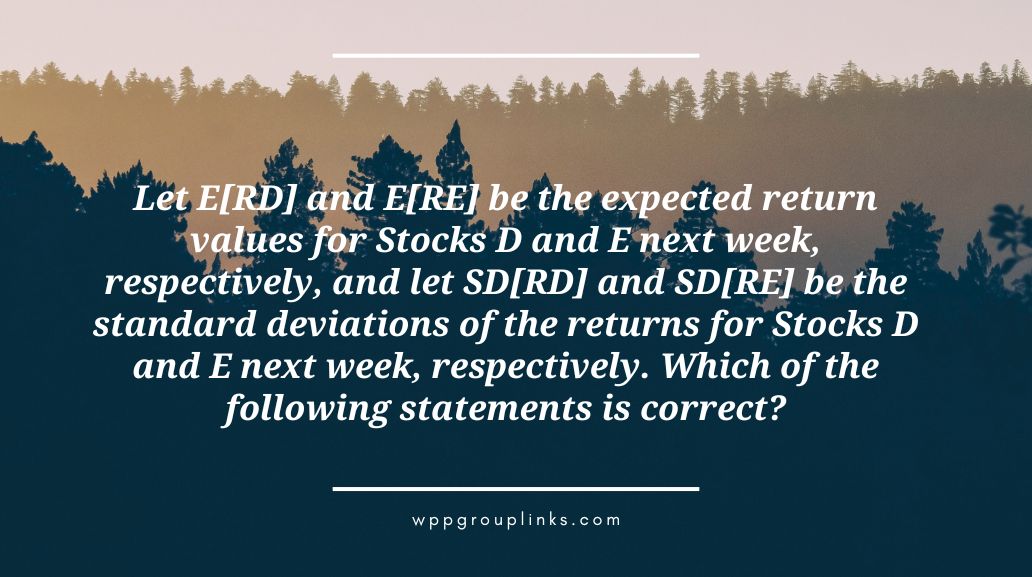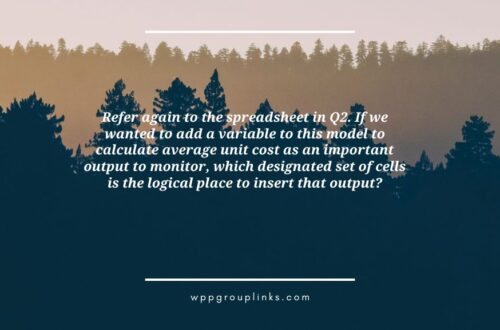
| 1 | -0.04 | 0.01 | 0.3 |
| 2 | 0.03 | 0.02 | 0.5 |
| 3 | 0.01 | -0.005 | 0.2 |
Q: Let E[RD] and E[RE] be the expected return values for Stocks D and E next week, respectively, and let SD[RD] and SD[RE] be the standard deviations of the returns for Stocks D and E next week, respectively. Which of the following statements is correct?
or
Q: Let SD[RD] and SD[RE] be the standard deviations of the returns for Stocks D and E next week, respectively, and let E[RD] and E[RE] be the anticipated return values for Stocks D and E next week. Out of the following assertions, which is true?
- E[RD] ≤ E[RE] and SD[RD] > SD[RE]
- E[RD] > E[RE] and SD[RD] ≤ SD[RE]
- E[RD] > E[RE] and SD[RD] > SD[RE]
- E[RD] ≤ E[RE] and SD[RD] ≤ SD[RE]





